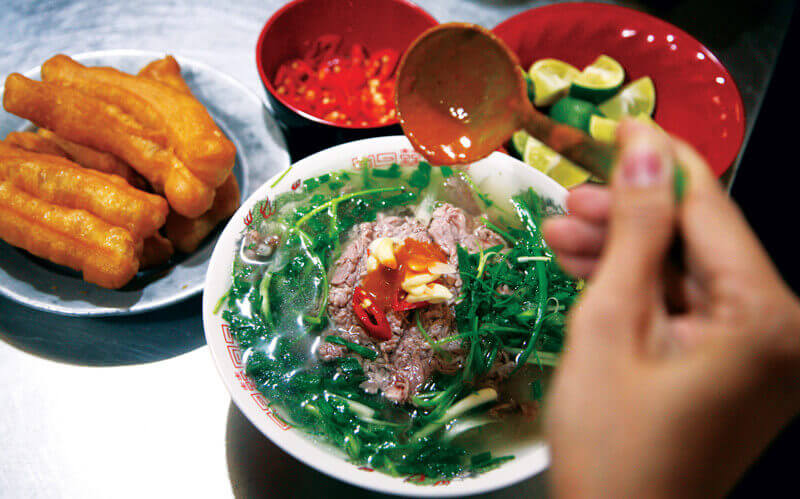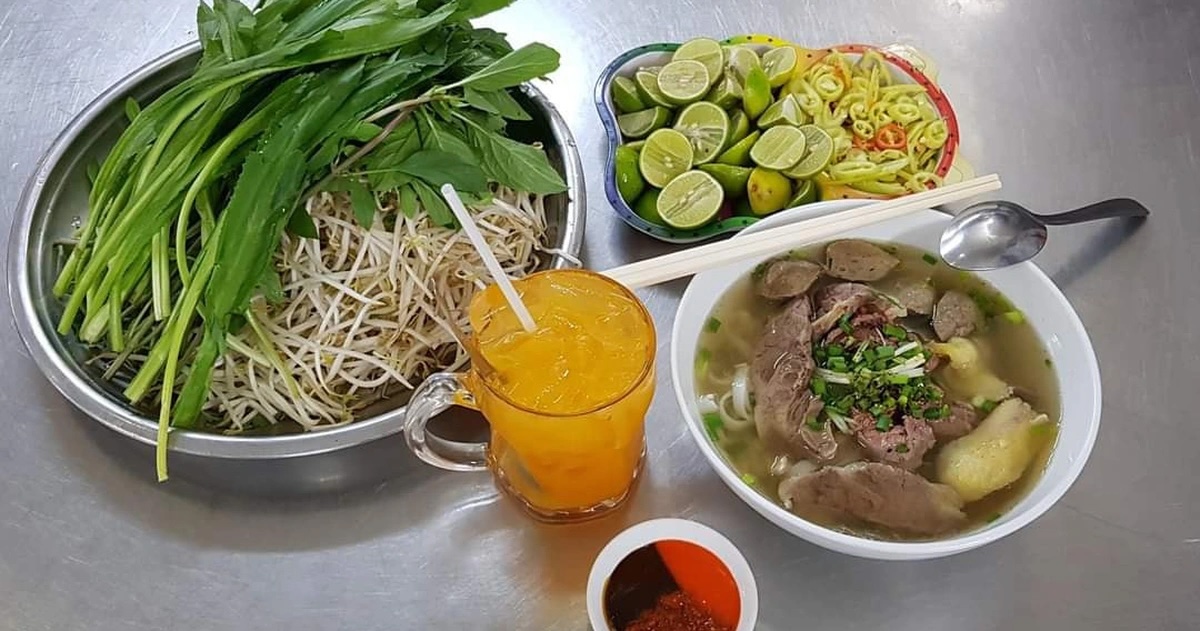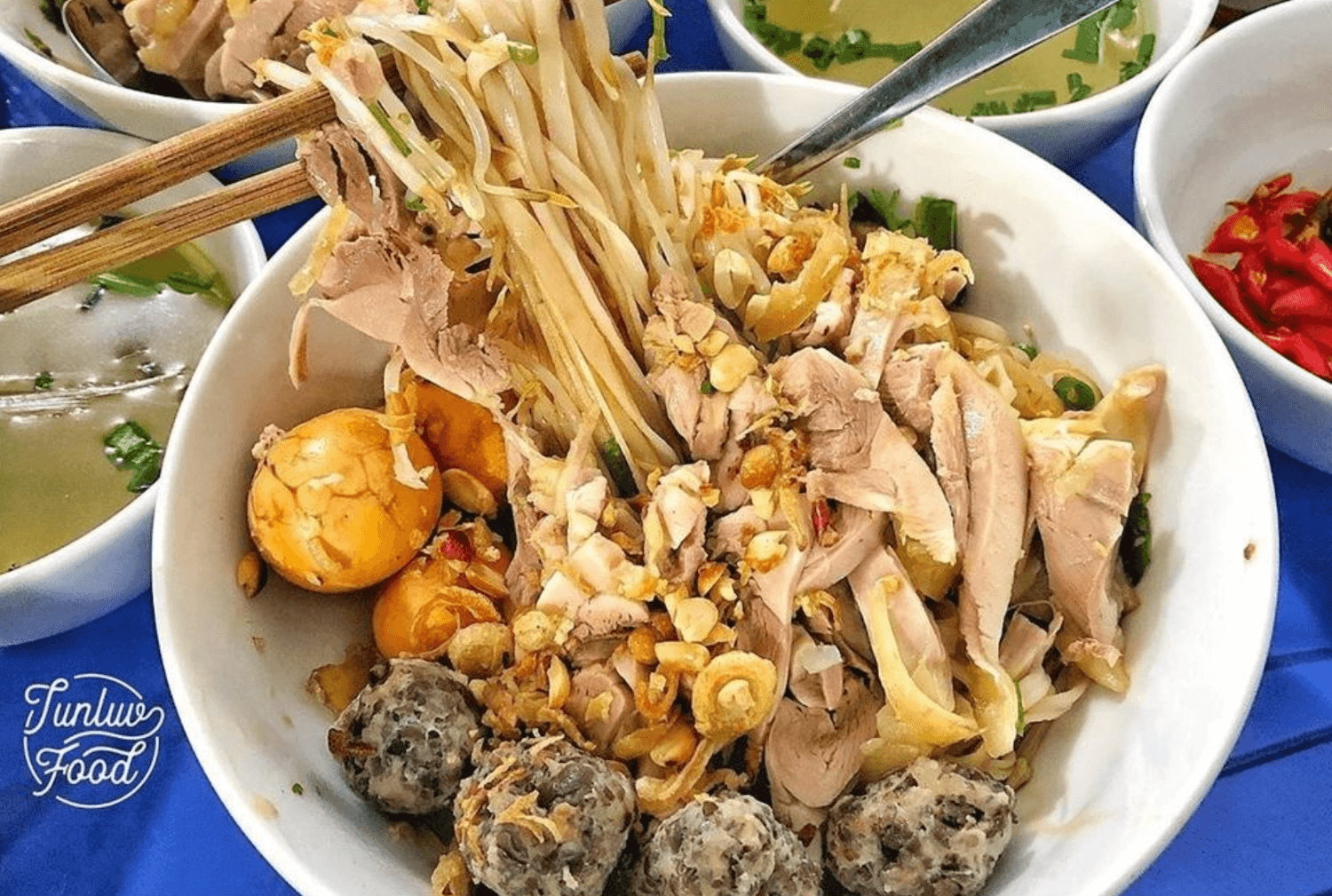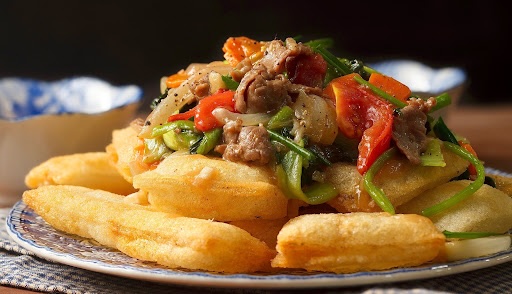Pho consists of a clear, aromatic broth simmered for hours with beef or chicken bones, rice noodles, and tender slices of meat, garnished with fresh herbs and vegetables.
Believed to have originated in Nam Dinh in the early 20th century, pho was likely shaped by French colonial influences and traditional Vietnamese cooking, before spreading to Hanoi. What started as a simple breakfast dish for workers has grown into one of the most internationally recognized Vietnamese dishes, carrying the flavors of home to tables around the world.
Over the past century, Vietnamese cooks have created countless variations of this versatile dish, transforming it from a humble soup into a canvas for culinary creativity.
Northern Pho vs Southern Pho
The most fundamental distinction in the world of pho lies between Northern (Pho Bac) and Southern (Pho Nam) styles, each reflecting the unique culinary traditions and preferences of their respective regions.
Northern Pho

Hanoi pho is known for its clean and mildly spiced broth, embodying the philosophy of restraint and balance, focusing on the quality of ingredients.
Garnishes are limited to fresh chili slices, lemon, and a few herbs, allowing the pure flavors of the broth and meat to shine through.
Alongside the northern pho is a trio of essential accompaniments: pickled garlic, crispy fried dough sticks (quẩy), and a distinct house-made chili sauce. The pickled garlic, with its bold bite and tangy vinegar base, adds a sharp contrast to the mild broth. The chili sauce brings a fresh heat, while the crunchy dough sticks offer texture and soak up the broth.
Southern Pho

In contrast, Southern pho represents a more exuberant approach to the dish. This variation tends to be sweeter and more herbaceous, reflecting the region's abundant tropical produce and bold flavor preferences.
Southern pho bowl often comes with an aromatic array of fresh herbs—culantro, Thai basil, rice paddy herb, spearmint, and a heaping handful of bean sprouts. Lime wedges and a variety of condiments, from hoisin sauce and chili paste to the occasional saté, allow each diner to tailor their bowl to their liking. This abundance and hands-on customization reflect Southern Vietnam’s culture of hospitality, and its identity as a cultural crossroads shaped by diverse palates.
Mixed Pho

Phở trộn, or mixed phở, is unlike the typical broth-based version; it is served dry, often accompanied by a small bowl of broth on the side. The dish combines rice noodles with slices of chicken or beef, fresh herbs, and a savory-sweet dressing, resulting in a salad-like composition. This refreshing, room-temperature format not only highlights the versatility of phở but also suits Vietnam’s tropical climate.
Pho ga tron (chicken mixed pho) is a popular dish among Hanoians. A sweet-sour dressing made from fish sauce, lime, sugar, garlic, and chili binds everything together. Some versions include pickled carrots and daikon for added texture.
Crispy Deep-Fried Pho

Deep-fried Pho (phở chiên phồng) is one of the most inventive reimaginings of pho. This variation takes the familiar rice noodles and subjects them to high heat, frying until they puff up into golden, airy pillows. These crispy pillows are topped with stir-fried beef, garlic, onions, carrots, and bok choy in a thick soy-based sauce.
The contrast between the crunchy base and the savory topping makes this dish a favorite among those looking for something texturally exciting. It's especially popular in cold weather or as a late-night indulgence.
Pho Rolls

Phở cuốn (pho rolls) is perhaps the freshest, most playful take on pho. Here, the noodles are not cut into strands but instead left as wide, soft sheets, used to roll grilled beef, fresh herbs, and lettuce.
First popularized in the Trúc Bạch neighborhood of Hanoi, phở cuốn is now a regular offering at modern Vietnamese eateries. It is often served cold, accompanied by a tangy fish sauce mixture that combines vinegar, sugar, garlic, and chili. People tend to enjoy it as a light meal or appetizer in hot weather.
It turns pho from a steamy bowl into a refreshing hand-held snack, while still retaining the core ingredients of the original. It's a testament to the creativity and adaptability that define Vietnamese cuisine, showing how traditional dishes can be reimagined for different dining contexts and preferences.
The world of pho extends far beyond the traditional bowl. What began as a humble street food has become a culinary ambassador, both preserving Vietnamese heritage and embracing global reinvention.
Whether you’re sipping a steaming bowl in Hanoi, dipping a pho roll into fish sauce on a Saigon sidewalk, or crunching into crispy deep-fried pho at a fusion bistro, you’re engaging with a living tradition.
So the next time someone says, “Let’s go get pho,” ask: Which kind?
Watch our review on different types of pho here!
Follow Flavors Vietnam on Instagram and Facebook
